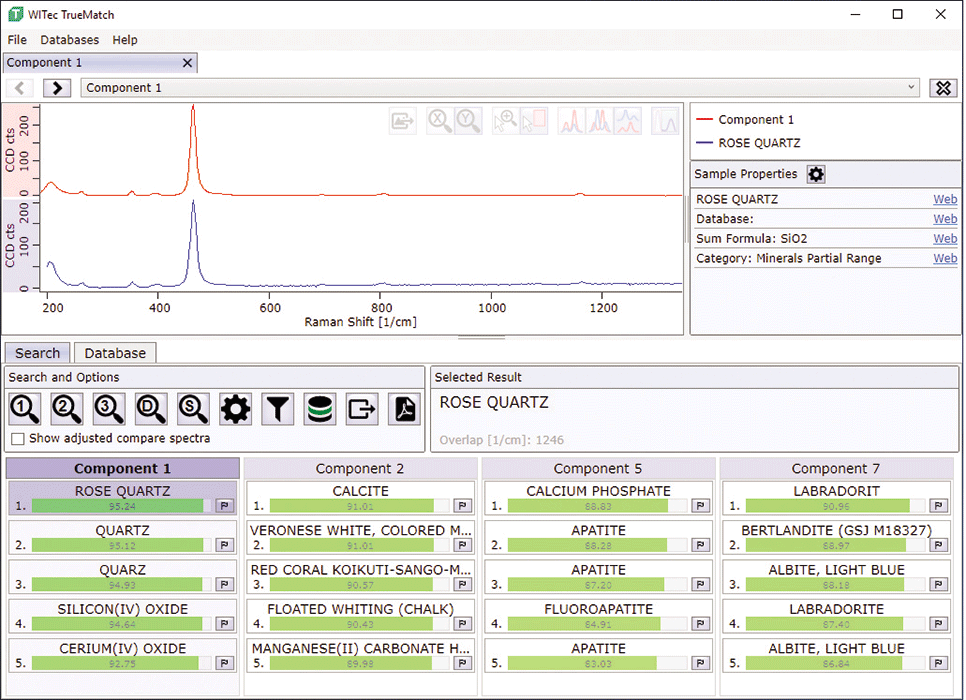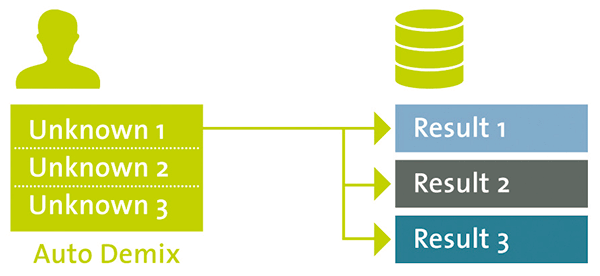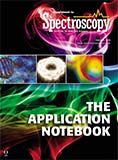How to Apply Database Insight to Raman Imaging Data
Special Issues
This application note describes the advantages of a simplified process of searching through Raman spectral databases and creating new ones for example, based on user generated data.
More detailed and precise results with Integrated Raman Spectral Database Management Software
Raman spectroscopists want to interpret their Raman imaging data as easily and quickly as possible. For that reason, the data evaluation process should generate images of the highest possible quality by using all relevant spectral information. In this context, spectral databases are very often used in order to identify unknown components. This application note describes the advantages of a simplified process of searching through Raman spectral databases and creating new ones based on user-generated data.

Figure 1: Screenshot of the software used showing a result of a simultaneous multi-spectra search of a spectral dataset generated from a mineral sample.
Ideal complement to standard analysis methods
A Raman imaging measurement typically consists of tens of thousands of acquired spectra that need to be evaluated after the experiment. If there are unknown components present in the sample, the user can apply various algorithms to identify them when using an appropriate database software. With the WITec TrueMatch software component, a first approach can be an individual component search within a database (Figure 1), allowing several spectra to be identified simultaneously. More often, the main challenge is to describe and identify spectra of mixtures. For this, two different methods can be applied. With a multi-component search, it is possible to combine up to three database components to describe a measured composite spectrum (Figure 2). Another way is the unique automated demix-search, which uses databases to describe the acquired spectra in terms of pure substances (Figure 3), which can then be physically located in an image. Seeing the distribution of pure chemical components matched to sample features gives the researcher a precise visualization verified by established databases.

Figure 2: Principle of a multi-component search
Raman Libraries
In order to optimize characterization procedures different databases can be used for the various search tasks. The availability of separate libraries, such as sample substrates or other standard components used in an experiment, can reduce the duration of the search process tremendously, especially in the case of demix-searches. For these specific areas of application, various libraries are compatible with the software and new ones can be generated individually.

Figure 3: Principle of an automated demix-search
Reports
The software generates reports which can be stored for use in subsequent measurements, amplifying the effectiveness of the system as a whole and turning meaningful results into a valuable resource.
Summary
TrueMatch is available as a fully integrated option with the WITec Project FIVE software environment and databases can be brought directly into use in post-processing. Multi-spectral searches enable the user to identify several spectra simultaneously, and return hit rates that show the probability of a match for each individual spectrum. This greatly accelerates the process of characterization and is a perfect complement to WITec's standard data analysis features.

WITec GmbH
Lise-Meitner-Str. 6, 89081 Ulm, Germany
tel. +49 (0)731 140 700, fax +49 (0)731 140 70 200
Website: www.witec.de

New Study Reveals Insights into Phenol’s Behavior in Ice
April 16th 2025A new study published in Spectrochimica Acta Part A by Dominik Heger and colleagues at Masaryk University reveals that phenol's photophysical properties change significantly when frozen, potentially enabling its breakdown by sunlight in icy environments.
Advanced Raman Spectroscopy Method Boosts Precision in Drug Component Detection
April 7th 2025Researchers in China have developed a rapid, non-destructive Raman spectroscopy method that accurately detects active components in complex drug formulations by combining advanced algorithms to eliminate noise and fluorescence interference.